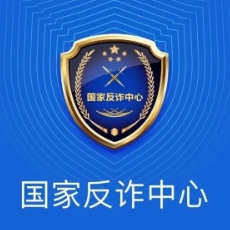AI Generated Content: Revolutionizing the Future of CreatiViTy and Efficiency
In the ever-evolving landscape of technology, AI-generated content has emerged as a transformative force, reshaping industries and redefining the boundaries of creativity and efficiency. From writing articles to composing music, artificial intelligence is no longer just a tool; it’s a collaborator, a creator, and a catalyst for innovation. But what exactly does AI-generated content entail, and how is it revolutionizing the way we produce and consume information?
The Rise of AI-Generated Content
The concept of AI-generated content might sound like something out of a science fiction novel, but it’s very much a reality today. Artificial intelligence has made significant strides in natural language processing (NLP), image recognition, and even creative arts. These advancements have enabled machines to generate content that is not only coherent but also remarkably human-like.
One of the most prominent examples of AI-generated content is in the realm of text generation. Tools like OpenAI’s GPT-3 and GPT-4 have demonstrated an uncanny ability to produce essays, reports, and even poetry that can rival human-written content. These AI models are trained on vast datasets, allowing them to understand context, tone, and style, and generate text that is both relevant and engaging.
Applications Across Industries
The applications of AI-generated content are vast and varied, spanning multiple industries. In the marketing sector, for instance, AI is being used to create personalized email campaigns, social media posts, and even entire ad copy. This not only saves time but also ensures that the content is tailored to the specific needs and preferences of the target audience.
In the publishing industry, AI is being used to generate news articles, blog posts, and even books. Some media outlets are already using AI to produce routine news stories, freeing up human journalists to focus on more in-depth reporting. Similarly, in the entertainment industry, AI is being used to compose music, write screenplays, and even generate visual art.
The Creative Potential of AI
One of the most intriguing aspects of AI-generated content is its potential to augment human creativity. Rather than replacing human creators, AI can serve as a powerful tool that enhances their capabilities. For example, a writer could use AI to generate initial drafts or brainstorm ideas, allowing them to focus on refining and perfecting the content.
Moreover, AI can help democratize creativity by making it accessible to a wider audience. With AI-powered tools, even those without formal training in writing, music, or art can create high-quality content. This opens up new opportunities for self-expression and innovation, enabling more people to share their ideas and stories with the world.
Challenges and Ethical Considerations
Despite its many advantages, AI-generated content is not without its challenges and ethical considerations. One of the primary concerns is the potential for misinformation and manipulation. With AI capable of producing highly convincing fake news, there is a risk that it could be used to spread false information or manipulate public opinion.
Another concern is the issue of copyright and intellectual property. As AI-generated content becomes more prevalent, questions arise about who owns the rights to such content. Is it the creator of the AI, the user who prompted the content, or the AI itself? These are complex legal and ethical questions that will need to be addressed as AI continues to evolve.
Additionally, there is the concern of job displacement. As AI becomes more proficient at generating content, there is a fear that it could replace human jobs in industries like journalism, marketing, and entertainment. However, many experts argue that AI is more likely to augment human jobs rather than replace them, creating new opportunities and roles that we have yet to imagine.
The Future of AI-Generated Content
Looking ahead, the future of AI-generated content is both exciting and uncertain. As AI technology continues to advance, we can expect to see even more sophisticated and nuanced content being produced. This could lead to new forms of storytelling, art, and communication that we have yet to envision.
At the same time, it will be crucial to navigate the ethical and societal implications of AI-generated content carefully. Ensuring that AI is used responsibly and transparently will be key to harnessing its full potential while minimizing its risks.
In conclusion, AI-generated content is not just a technological innovation; it’s a cultural and creative revolution. By augmenting human creativity and efficiency, AI has the potential to transform the way we produce and consume content, opening up new possibilities for expression and innovation. As we continue to explore the capabilities of AI, it’s essential to approach this technology with both curiosity and caution, ensuring that it serves as a force for good in the world.















 津公网安备12011002023007号
津公网安备12011002023007号